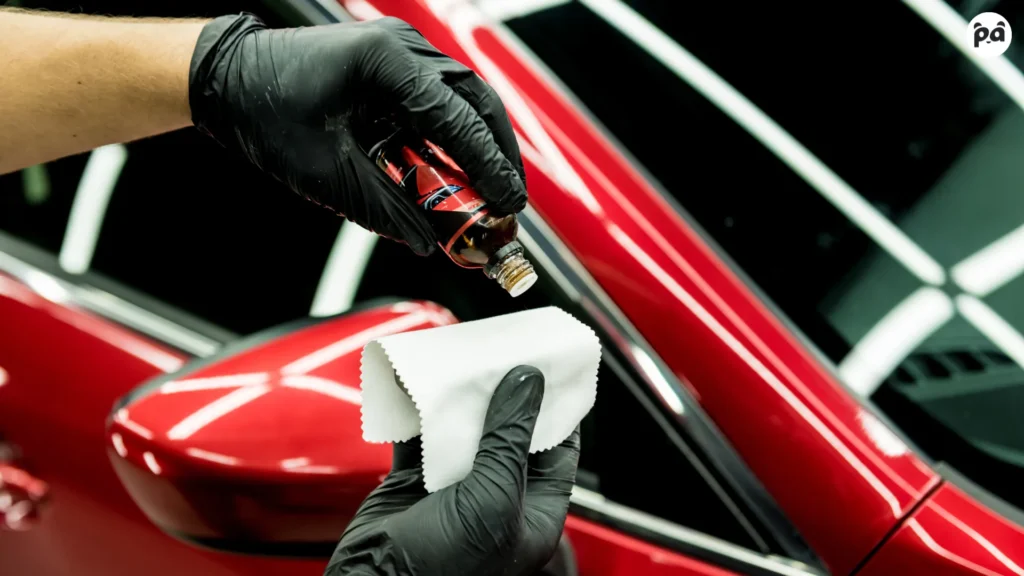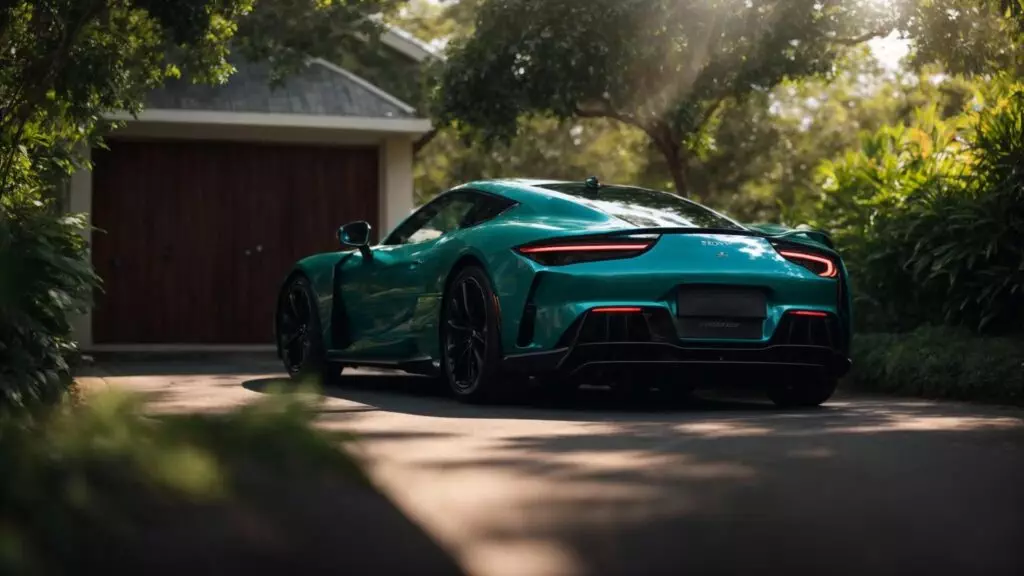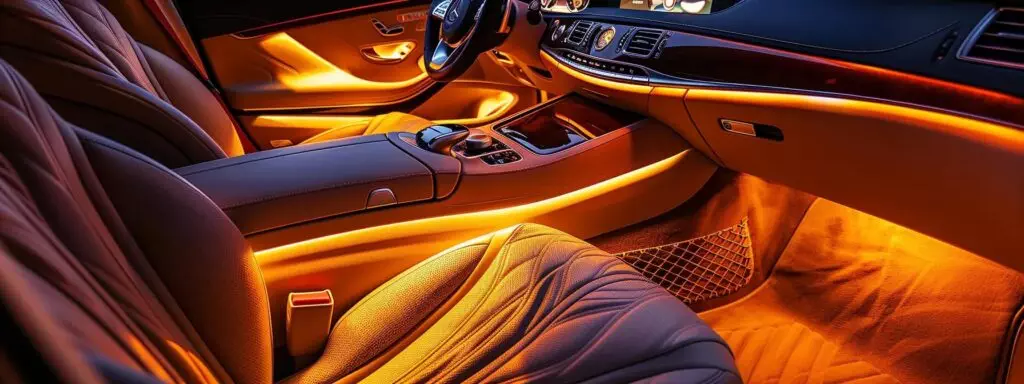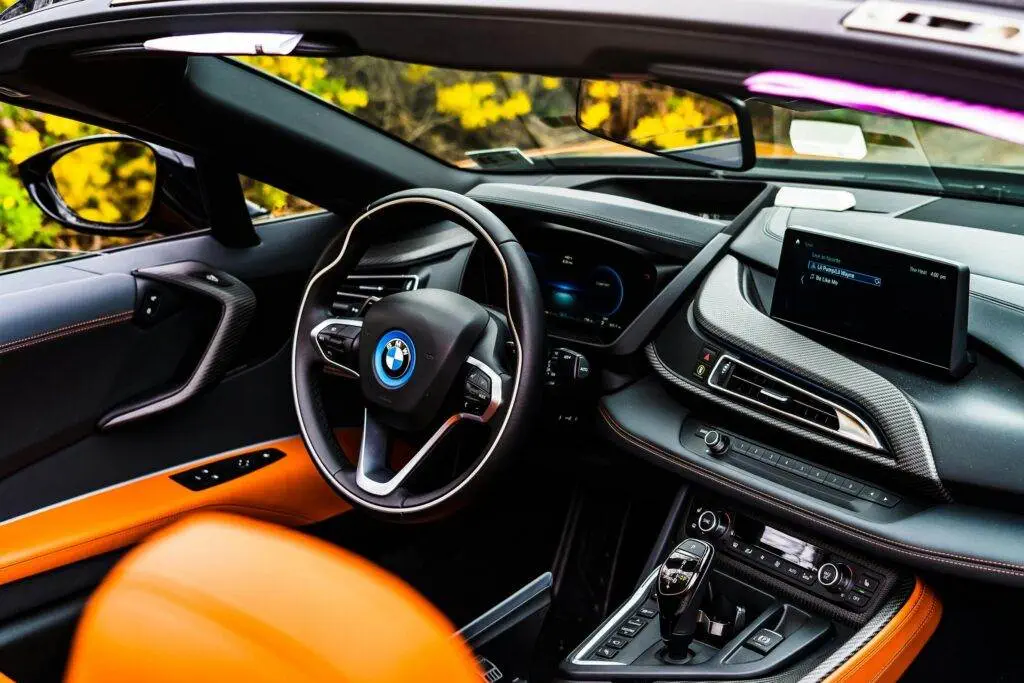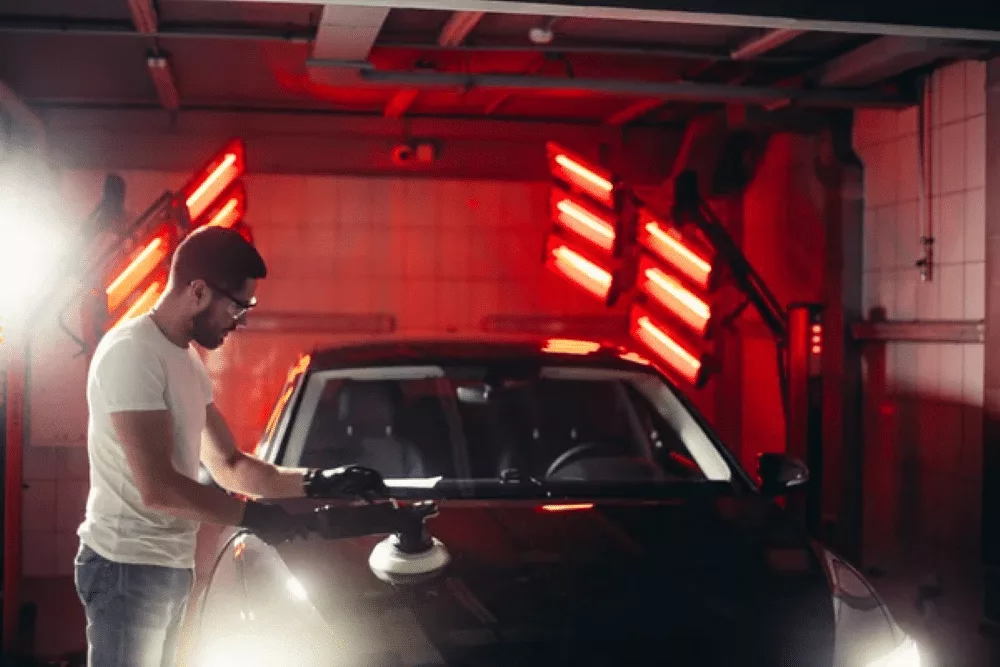- Mon - Fri: 8:00 AM - 4:00 PM / Sat: By Appointment / Sunday: Closed
- 0420 206 206
- Unit 41 / 566 Gardeners Rd, Alexandria NSW 2015
Paint Protection Film vs Traditional Wax: What to Know
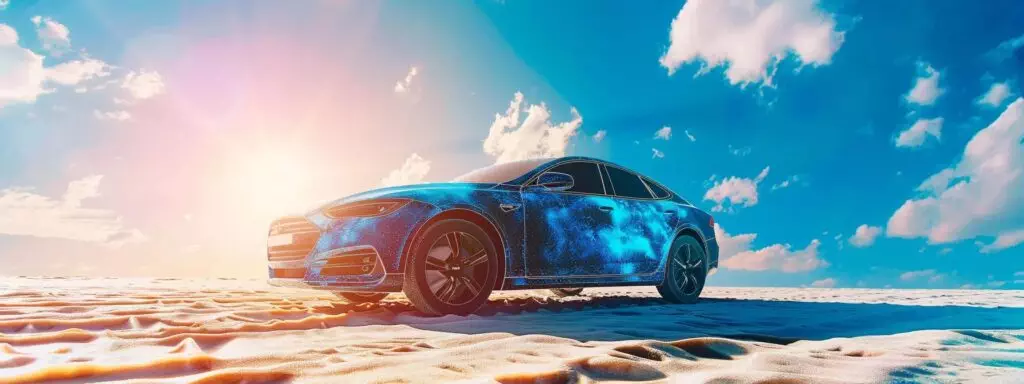
Jump to...
Are you torn between Paint Protection Film (PPF) and traditional wax for safeguarding your car’s paintwork? This guide compares these two popular options, focusing on their durability, cost, and application processes. You’ll learn about the long-lasting protection offered by PPF and the affordability of traditional wax. By the end, you’ll have the knowledge to choose the best option for your vehicle, whether you’re looking to protect a new car or enhance an older model’s appearance.
Key Takeaways
- PPF offers long-lasting protection against scratches and environmental damage, lasting up to 10 years
- Traditional wax requires frequent reapplication but is cost-effective and can be applied at home
- PPF installation needs professional expertise, while wax can be applied by car owners themselves
- Proper maintenance is crucial for both PPF and wax to ensure optimal performance and longevity
- Consider your priorities, budget, and driving habits when choosing between PPF and wax for protection
Understanding Paint Protection Film (PPF)
What is Paint Protection Film?
Paint Protection Film (PPF) is a robust, transparent layer applied to your vehicle’s exterior to protect your new car. This advanced technology offers superior defence against:
- Ultraviolet rays
- Water damage
- Everyday wear and tear
- Scratches and chips
- Environmental damage
Furthermore, PPF‘s unique composition creates a slip surface that repels contaminants, making it easier to maintain your vehicle’s pristine appearance through professional car detailing and experienced paint correction.
Benefits of Using Paint Protection Film
Paint Protection Film provides comprehensive protection through:
- Superior defence against road debris
- Protection for vulnerable areas including bumper, bonnet, and headlamps
- Strong adhesion for long-lasting protection
- Self-healing properties that allow minor scratches to disappear with heat application
Additionally, PPF can be combined with ceramic coatings and graphene coating for enhanced gloss and hydrophobic properties. Professional car detailing and paint protection film installation for new cars ensures your vehicle receives complete protection from the moment it leaves the showroom, while professional car detailing services can help maintain its pristine condition.
Experience the Glosshaus Difference
Ride with confidence. Contact us now to schedule a professional detailing service.
Exploring Traditional Wax
Types of Car Wax
Car waxes come in various forms, each suited to different needs and preferences:
- Spray waxes: Ideal for quick application and protecting against dust and debris
- Paste waxes: Offers superior durability and longevity
- Liquid waxes: Provides balance between ease of use and protection
When choosing a wax, consider:
- Your vehicle’s colour
- Required level of protection
- Brand reputation for quality
For comprehensive care, consider combining waxing with experienced paint correction and professional car detailing services to maintain your vehicle’s appearance.
Advantages of Traditional Wax
Traditional wax offers several benefits:
- Easy DIY application without professional equipment
- Cost-effective protection
- Creates protective barrier against:
- Bird droppings
- Tree sap
- Environmental elements
- Regular reapplication flexibility for maintaining protection
- Compatible with other protection methods
- Bird droppings
- Tree sap
- Environmental elements
While it may not match the longevity of paint protection film or graphene coating, wax provides an accessible solution for routine car care and protection. Professional detailing services can further enhance these benefits through experienced paint correction and maintenance.
Secure Your Detail Now
Availabilities are limited. Make a booking today or call us to get started.
Durability and Longevity: PPF vs. Wax
Longevity of Paint Protection Film
Paint Protection Film (PPF), or clear bra, offers exceptional long-term protection with these benefits:
- Protection duration of up to 10 years when properly installed
- Resistance against:
- Stains
- Abrasive materials
- Environmental damage
- Maintains mirror-like finish
- No frequent reapplication needed
- Stains
- Abrasive materials
- Environmental damage
The installation process requires:
- Surface preparation with isopropyl alcohol
- Professional application techniques
- Optional enhancement with graphene coating
For maximum protection, combine PPF with professional car detailing and experienced paint correction services.
Longevity of Traditional Wax
Traditional wax provides temporary protection with:
- Duration of 4-8 weeks before reapplication needed
- Diminishing effectiveness after each car wash
- Basic shield against minor wear and tear
Factors affecting wax longevity include:
- Frequency of car washes
- Exposure to environmental elements
- Quality of wax product used
- Proper application technique
- Regular maintenance schedule
While wax requires more frequent maintenance compared to paint protection film or graphene coating, it can be enhanced through experienced paint correction and professional detailing services.
Experience the Glosshaus Difference
Ride with confidence. Contact us now to schedule a professional detailing service.
Cost Analysis: PPF vs. Traditional Wax
Initial Costs of Paint Protection Film
Paint Protection Film (PPF) involves higher upfront investment due to:
- Professional installation requirements
- Specialized software and tools
- Complex application process
- Coverage for multiple vehicle areas:
- Fender
- Pillars
- Automotive paint surfaces
- Fender
- Pillars
- Automotive paint surfaces
While the initial cost is significant, PPF provides comprehensive protection against environmental factors like tree sap with minimal long-term maintenance requirements.
Ongoing Costs of Traditional Wax
Traditional wax involves regular expenses including:
- Product purchases every few months
- Time investment for regular application
- Maintenance supplies:
- Soap
- Towels
- Application materials
- Soap
- Towels
- Application materials
Though wax has lower upfront costs, consider these factors when calculating total investment:
- Frequency of reapplication (every few months)
- Labor costs (DIY time or professional services)
- Long-term accumulative expenses
- Protection level against:
- Sunlight damage
- Minor corrosion
- Environmental factors
- Sunlight damage
- Minor corrosion
- Environmental factors
For luxury vehicles, alternatives like professional detailing services or graphene coating may offer better value despite higher initial costs.
Secure Your Detail Now
Availabilities are limited. Make a booking today or call us to get started.
Application Process: PPF vs. Wax
Applying Paint Protection Film
Applying Paint Protection Film requires professional expertise and specialised equipment. The process involves:
- Thorough cleaning and surface preparation as part of professional car detailing
- Precise cutting of film to match your car’s contours
- Careful wet installation by xpel installers or experienced professionals
- Special attention to avoid bubbles or misalignment, particularly crucial for paint protection film installation on new cars
Once applied, the film needs 24-48 hours to cure before washing or driving your vehicle, effectively protecting your new car.
Applying Traditional Wax
You can apply traditional wax to your vehicle at home with minimal equipment. The process includes:
- Thoroughly washing and drying your car
- Working wax into the paint using circular motions with a clean applicator pad
- Covering one section at a time
- Allowing wax to dry to a haze before buffing with a microfibre cloth
This process protects your car’s paint and enhances its shine. For enhanced protection, consider professional car detailing or graphene coating.
Experience the Glosshaus Difference
Ride with confidence. Contact us now to schedule a professional detailing service.
Maintenance and Care
Maintaining Paint Protection Film
To maintain Paint Protection Film (PPF), you need to follow specific care instructions. For those looking to protect their vehicle, proper maintenance includes:
- Regular washing using pH-neutral shampoo and a microfibre mitt
- Avoiding harsh chemicals or abrasive materials
- Using isopropyl alcohol solution for stubborn stains, applied with gentle dabbing
- Considering professional car detailing or graphene coating for comprehensive care
Maintenance Schedule:
| Task | Frequency | Method |
|---|---|---|
| Washing | Weekly | pH-neutral shampoo, microfibre mitt |
| Drying | After each wash | Microfibre towel or air blower |
| Stain removal | As needed | Isopropyl alcohol solution, gentle dabbing |
| Inspection | Monthly | Visual check for damage or lifting |
Maintaining Traditional Wax
Traditional wax requires regular reapplication every 4-6 weeks, depending on environmental exposure. The maintenance process involves:
- Weekly car washing using pH-neutral shampoo
- Complete drying with a microfibre towel to prevent water spots
- Monthly inspection of wax coating for wear signs
- Regular reapplication every 4-6 weeks
- Using quick detailer spray between waxings
For wax application:
- Thoroughly wash and dry your car
- Apply wax in small circular motions using a foam applicator
- Work on one section at a time
- Allow wax to dry to a haze before buffing with a clean microfibre cloth
For optimal protection, consider professional car detailing, graphene coating, or experienced paint correction.
Secure Your Detail Now
Availabilities are limited. Make a booking today or call us to get started.
Choosing the Best Option for Your Vehicle
Factors to Consider When Choosing PPF
When choosing Paint Protection Film (PPF) for your vehicle, consider these key factors:
- Quality and warranty of the film from reputable brands
- Installer‘s expertise and experience with your specific car model
- Coverage area needed (partial vs. full-body protection)
- Environmental conditions and driving habits
- Higher initial investment for long-lasting protection
Factors to Consider When Choosing Wax
Several elements should influence your wax selection:
- Vehicle paint type and color considerations
- Darker colors: Carnauba waxes for deep, wet-looking shine
- Lighter colors: Synthetic waxes for enhanced durability
- Application and removal ease
- Climate compatibility, especially resistance to high temperatures
- Maintenance commitment, as reapplication frequency varies between products
- Cost-effectiveness with regular maintenance needs
- Darker colors: Carnauba waxes for deep, wet-looking shine
- Lighter colors: Synthetic waxes for enhanced durability
Conclusion
Transform your vehicle’s protection from ordinary to extraordinary with cutting-edge Paint Protection Film. Book your professional PPF installation with Glosshaus Bespoke Detailing today and experience Sydney’s most trusted paint protection specialists. Our certified technicians deliver unparalleled results backed by years of expertise in luxury vehicle care. Contact us now to secure your vehicle’s pristine appearance for years to come, with our premium protection solutions starting from just one consultation.
Experience the Glosshaus Difference
Ride with confidence. Contact us now to schedule a professional detailing service.
Frequently Asked Questions
Paint protection film typically lasts between 5 to 10 years, depending on factors such as the quality of the film, installation method, and maintenance. Regular cleaning and proper care can extend its lifespan, ensuring long-lasting protection for your vehicle’s paintwork.
The frequency of car waxing depends on various factors, including your vehicle’s exposure to elements and driving conditions. Generally, waxing every 3-4 months is recommended for optimal protection. However, if you notice water no longer beading on the surface, it’s time to reapply wax sooner.
While it’s possible to apply paint protection film (PPF) yourself, it’s not recommended. Professional installation ensures proper alignment, smooth application, and avoids costly mistakes. The process requires specialised tools, skills, and a dust-free environment for optimal results and longevity of the protective film.
Car wax provides some UV protection, but it’s limited and short-lived. While it can help shield your vehicle’s paint from sun damage, its effectiveness diminishes quickly. For more robust and longer-lasting UV protection, ceramic coatings or paint protection films are recommended.
Ceramic coatings typically offer more cost-effectiveness in the long run compared to traditional waxes or sealants. While initially pricier, their durability and longevity mean less frequent reapplication, saving time and money over several years of vehicle ownership.
Paint Protection Film (PPF) is designed to be nearly invisible when applied correctly. It preserves your car’s original appearance while providing a protective layer against scratches, chips, and environmental damage. High-quality PPF maintains the vehicle’s gloss and colour without altering its aesthetics.
Yes, Paint Protection Film (PPF) can be safely removed without damaging the paint when done correctly by professionals. The process involves careful heating and peeling of the film, followed by thorough cleaning to remove any adhesive residue. However, improper removal techniques can risk paint damage.
Traditional car wax is generally safe for most automotive paint types, including clear coat finishes. However, it may not be suitable for matte or satin paint finishes, as it can alter their appearance. Always check your vehicle’s manual or consult a professional detailer before applying wax to ensure compatibility.
PPF requires less maintenance than traditional wax. While wax needs reapplication every few months, PPF lasts several years with proper care. Simply wash your vehicle regularly using pH-neutral soap and avoid abrasive materials to keep PPF in top condition.
Table of Contents
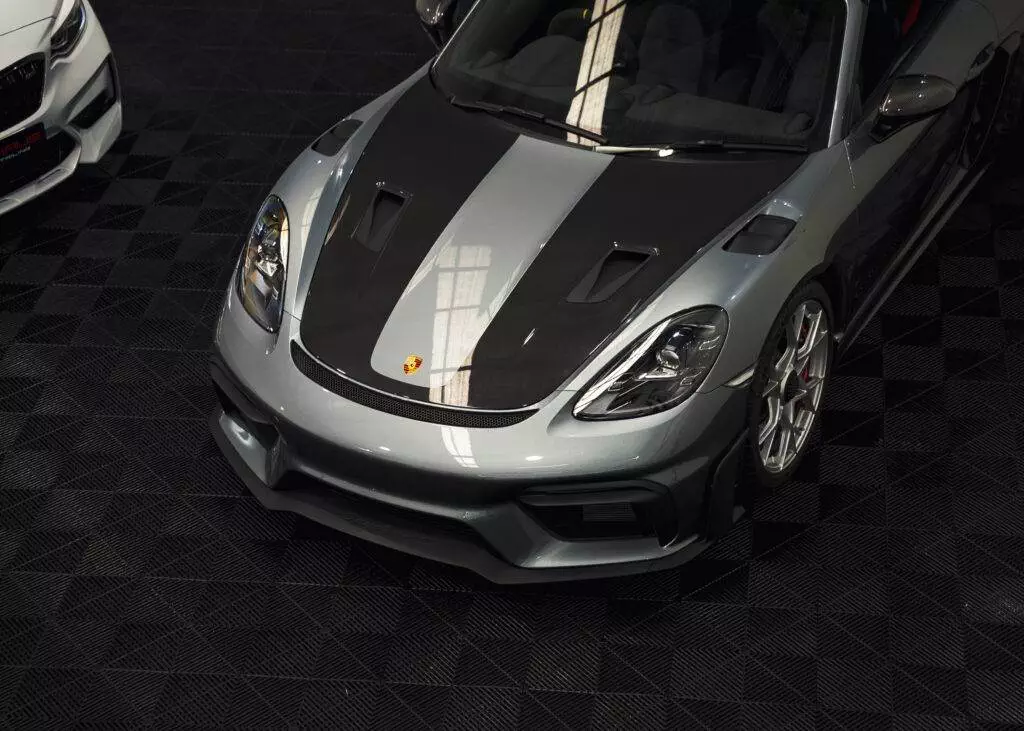
Ready to Shine?
Secure Your Detail Now
We provide 5-Star quality detailing,
Guaranteed
Recent Insights
Introduction Understanding the factors that influence car detailing costs is essential for car owners aiming to maintain and enhance their vehicle’s appearance and value. By
Introduction Keeping your car’s interior clean is essential for maintaining its value and ensuring a healthy environment for all passengers. Regular cleaning helps preserve upholstery,
Introduction Car detailing is more than just a wash and wax; it involves a thorough process that cleans, restores, and protects every aspect of your
Car Detailing
Rediscover the joy of driving a flawlessly clean car.
New Car Protection
Protect your investment and keep your new car looking showroom-new.
Paint Protection Film (PPF)
Drive with confidence knowing your paint is shielded from everyday hazards.
Motorbike Detailing
Give your bike the specialised care it deserves for peak performance and head-turning shine.

Visit Our Detailing Studio
Unit 41 / 566 Gardeners Rd
Alexandria NSW 2015
Quick Links
Our Services
Copyright © 2025 Glosshaus. All Rights Reserved
